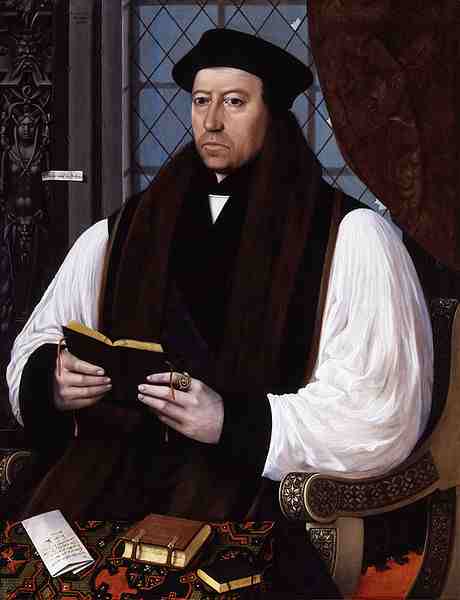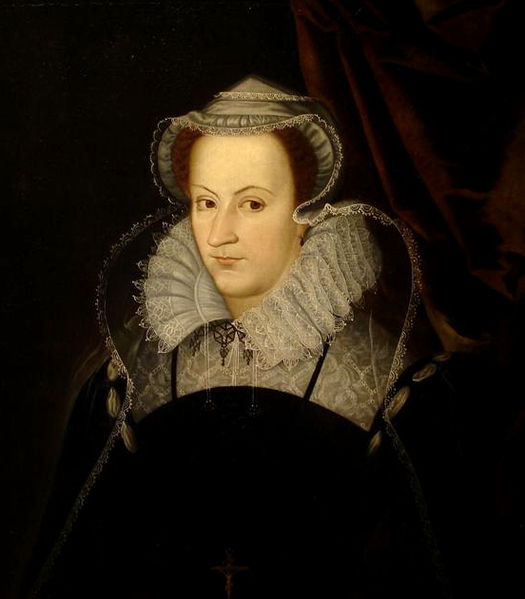 William Somer (Sommers) served as Henry VIII's fool from June 1535 and just a month later got into trouble with the King. In July 1535, Eustace Chapuys, the Imperial ambassador, recorded that Henry VIII was so angry with Somer that he nearly killed him:
William Somer (Sommers) served as Henry VIII's fool from June 1535 and just a month later got into trouble with the King. In July 1535, Eustace Chapuys, the Imperial ambassador, recorded that Henry VIII was so angry with Somer that he nearly killed him:
"He the other day nearly murdered his own fool, a simple and innocent man, because he happened to speak well in his presence of the Queen and Princess [Catherine of Aragon and Mary], and called the concubine “ribaude” [wh*re] and her daughter “bastard.” He has now been banished from Court, and has gone to the Grand Esquire, who has sheltered and hidden him."1
The “Grand Esquire” refers to Sir Nicholas Carew, Chief Esquire of the King. Alison Weir2 goes as far as to say that Carew dared Somer to call Anne Boleyn and Elizabeth names, but that is not what Chapuys says here, he just says that Carew sheltered Somer. In 1536, the same Nicholas Carew appeared to be working against Anne Boleyn and was mentoring Jane Seymour.
Fortunately for Somer, he managed to work his way back into the King's favour and after Henry VIII's death he went on to serve Edward VI and Mary I. He attended Elizabeth I at her coronation in 1559 but seems to have retired after that. Somer died on 15 June 1560 in Shoreditch, London. He was buried at St Leonard's Church, Shoreditch.
William Somer can be see in the Family of Henry VIII painting which hangs at Hampton Court Palace – look at the man standing in the right hand archway. The woman shown in the left hand archway is “Jane the Fool”.

Jane was court fool to Queen Anne Boleyn, Queen Mary I (when she was princess and queen) and Queen Catherine Parr. Jane was what John Southworth, in his book Fools and Jesters at the English Court, refers to as an "Innocent".3 "Innocents", or "natural fools", were not professional entertainers, they were people with intellectual disabilities or mental illness. Very little is known about Jane. We don't know her full name or where she came from. However, we do have records of her serving Anne, Mary and Catherine. From “The Queen’s reckoning”, the list of debts owed by Anne Boleyn at her death in May 1536, we know that Anne paid for “25 yds. of cadace fringe, morrey color, delivered to Skutte, her tailor, for a gown for her Grace’s woman fool, and a green satin cap for her.”4
 We know that Jane joined Princess Mary’s household after Anne’s death because Mary’s Privy Purse Expenses have frequent mentions of “Jane the fole” from December 1537. Payments include stabling for her horse and for hose and shoes for her in December 1537, fabric and gowns for her in 1538, shoes and clothing for her in 1542, several payments to a barber in 1543 and 1544 for Jane’s head to be shaved, needles for needlework, a payment for laundering her clothes, an “itm for Jane the foole for the tyme of hir seeknes [sickness]” in July 1543, and cloth for sheets for Jane in September 1543.5 John Southworth points out that the regular shaving of Jane’s head in 1543 and 1544 points to Jane having some kind of “bodily ailment” at this time, but Suzannah Lipscomb writes that fools often had shaven heads and that this may have echoed “the tonsures of the religious”, although Lipscomb is probably referring only to male fools here.6
We know that Jane joined Princess Mary’s household after Anne’s death because Mary’s Privy Purse Expenses have frequent mentions of “Jane the fole” from December 1537. Payments include stabling for her horse and for hose and shoes for her in December 1537, fabric and gowns for her in 1538, shoes and clothing for her in 1542, several payments to a barber in 1543 and 1544 for Jane’s head to be shaved, needles for needlework, a payment for laundering her clothes, an “itm for Jane the foole for the tyme of hir seeknes [sickness]” in July 1543, and cloth for sheets for Jane in September 1543.5 John Southworth points out that the regular shaving of Jane’s head in 1543 and 1544 points to Jane having some kind of “bodily ailment” at this time, but Suzannah Lipscomb writes that fools often had shaven heads and that this may have echoed “the tonsures of the religious”, although Lipscomb is probably referring only to male fools here.6
In 1544, Jane joined Catherine Parr’s household, which also included Catherine’s male fool, Thomas Browne. In October 1544, in a list of payments to Thomas Becke for items for the Privy Chamber are “3 geese for Jane Foole 16d., hempseed for the parrots 16d., cream 4d., wool 6d., mending the parrots’s perch 4d., 3 gallons of milk 12d., 2 gallons of cream 8d., borrowing of vessel occupied for the Queen at Otforde 6d., cream at Leeds 2d., and a hen for Jane Foole 6d.”7 and John Southworth surmises that the Queen kept Jane occupied by providing her “with a little flock of poultry to look after in a corner of the Privy Garden”. There is also mention of “two gowns and two kirtles for Jane the Queen’s fool” in a warrant to the Great Wardrobe in June 1546.8 Jane then disappears from the records until Mary I’s reign, so perhaps she joined Mary’s household when Henry VIII died and Edward VI became King. There are frequent mentions of Jane in Mary I’s expenses from 1553-1558 and Southworth points out that “the number of gowns and accessories ordered for Jane is greater in number than those for any other person bar the queen herself” and that she is always referred to as “Jane our fool”. It appears that Mary doted on her. The payments don’t only cover fabric and clothing, records show that Mary also rewarded two women for helping Jane with an eye ailment, one for healing her and one for housing Jane while she recovered.
It is not known what happened to Jane after Mary I’s death, but she does not appear in the records in Elizabeth I’s reign. Perhaps she joined the household of one of Mary’s former attendants, or perhaps she died soon after her mistress. We just don’t know. What we do know is that she was well looked after at court for over two decades.
Historian Suzannah Lipscomb wonders if Tudor fools were actually people with learning disabilities – see All the King’s Fools for more on this.
Notes and Sources
- Calendar of State Papers, Spain, Volume 5 Part 1: 1534-1535, Note 184.
- Weir, Alison. Henry VIII: King and Court, p365.
- Southworth, John. Fools and Jesters at the English Court, Chapter 12 – Jane: A Female Innocent.
- Letters and Papers, Foreign and Domestic, Henry VIII (LP) Volume X, p383.
- Privy purse expenses of the Princess Mary, daughter of King Henry the Eighth, afterwards Queen Mary
with a memoir of the princess, and notes by Frederick Madden (1831). - Lipscomb, Suzannah. All the King’s Fools, History Today Volume: 61 Issue: 8 2011.
- LP xix Part 2, p406.
- LP xx1 Part 1, p567.



Claire, I was talking with a chum of mine who has just been awarded her doctorate for her research into the medical treatment of medieval & early modern times. One of the things she was saying was that those who we have previously classed as slow, and those with other mental disabilities, were considered to “be touched by the hand of God”. Presumably this could be why many Eruopean households had ‘fools’ (for evidence of this see various European paintings particularly Velasquez).
The shaving of the head may well reflect the tonsure if the person was deemed to have been touched by the hand of God. It might also suggest that poor Jane was afflicted with something like psoriasis, eczma or dermatitus, or perhaps had regular investations of headlice?
As Jane disappears from view after Mary’s death, do we have any record of any ‘fools’ being at Elizabeth’s Court and on the royal payroll? If not, then perhaps their welfare was deemed to be too Roman and the practice ceased after the re-establishment of the Anglican Church? If so, it would be a rather unChristian act!
Hi Mell,
Yes, Elizabeth I had a few jesters/fools. Names that can be found in her records include Richard Tarleton, Monarcho and Jack Grene and then Ippolyta the Tartarian and Tomasin de Paris, who were both described as “dwarves”. See “Fools and Jesters at the English Court” by John Southworth for more information. Although some of Elizabeth’s fools were more entertainers, as in actors, others were “innocents”.
Will Sommers, interestingly enough, was featured in a number of Tudor pictures:
http://tudorfaces.blogspot.ca/2013/06/clowning-around-portraits-of-will.html